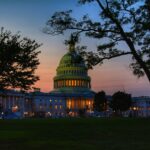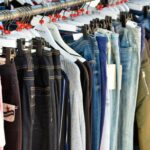Private Schools Reopen, Leaving Public Schools in the Dust
As summer approaches, the country is starting to see the light at the end of the tunnel for the COVID-19 pandemic. The narrative is shifting to what schools are going to do in the fall and whether or not in-person instruction will be held. This past school year made it abundantly clear that public, private, and independent schools all have vastly different approaches to handling unpredictable operational challenges. But when it comes to transitioning back to in-person education, private schools are miles ahead.
For the first time in years, private and independent schools are seeing increases in enrollment despite the economic downturn; a factor that should have indicated a decline in private school enrollment. During the Great Recession, private and independent school enrollment went down by 3 percent due to economic conditions – so why the change?
Getting students back in the classroom for in-person education is a priority for many parents, if not a necessity. In November 2020, Kennesaw State University’s Education Economics Center’s Dr. Ben Scafidi published a report after conducting a survey of 160 independent schools across 15 states and Washington, D.C. He found that 121 of those schools were open for full-time, in-person learning, and the remaining 39 were offering a hybrid – half virtual, half online – option. Of these 160 schools, approximately half experienced an increase in enrollment during the 2020-2021 school year, and another 20 percent saw their enrollment stay the same.
Private schools are continuing on a path of success by balancing health and safety precautions with in-person learning, while public schools fall behind. In early February, CDC Director Dr. Rochelle Walensky spoke about results of a study on school reopening, saying that “There is increasing data to suggest that schools can safely reopen and that safe reopening does not suggest that teachers need to be vaccinated.”
However, we are seeing significant pushback from teachers unions regarding reopening schools. And even the Biden administration has been sending mixed signals. White House Press Secretary Jen Psaki downplayed Walensky’s comments, while maintaining the Administrations’ goal of getting students back in the classroom within its’ first 100 days.
This hesitancy to go back to full-time, in-person learning is disproportionately affecting students with disabilities, English language learners, and children from lower socioeconomic classes. According to the Institute of Education Sciences, as of early March 2021, approximately 80 percent of students attended public schools that offered full-time or hybrid in-person instruction, and 20 percent of public-school students attended school completely online. While that may seem reasonable, students in high-need groups are not prioritized for in-person instruction. Approximately 70 percent of English language learners, 55 percent of children with disabilities, and 74 percent of students experiencing homelessness were not prioritized for in-person instruction by the public schools they attend.
Not opening public schools puts not only high-need students, but all students at a disadvantage as we approach the next school year. If public schools continue on the path they’re on now, parents will continue to seek out alternatives for their children.




